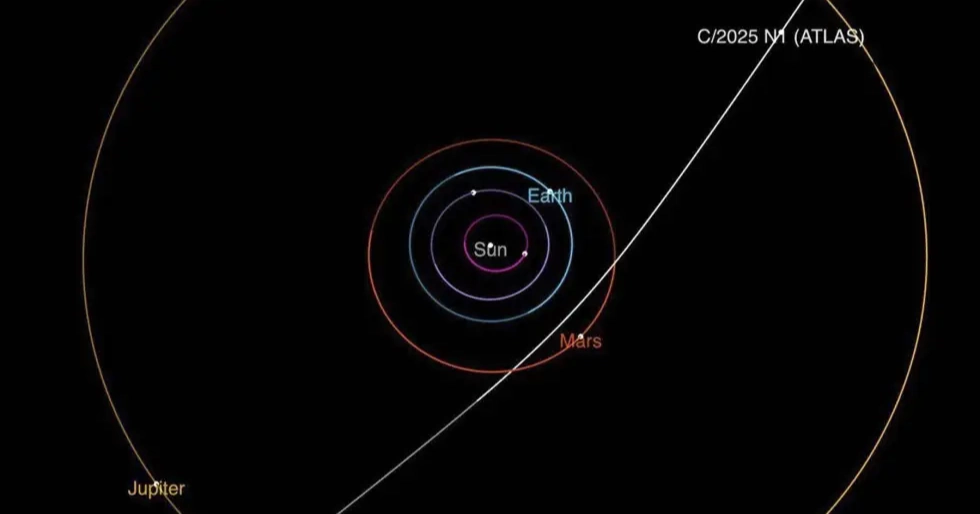NASA has identified an interstellar comet that has drifted into our solar neighborhood.
Spotted earlier this week by the ATLAS telescope in Chile, the fast-moving object has been confirmed as a comet originating from beyond our star system. It is the third known interstellar visitor—and poses no danger to Earth.
“These objects take millions of years to travel between stellar neighborhoods, so this one has likely been traversing space for hundreds of millions or even billions of years,” said Paul Chodas, director of NASA’s Center for Near Earth Object Studies, on Thursday. “We don’t know its origin, so we can’t yet pinpoint which star it came from.”
Currently about 416 million miles (670 million km) from the Sun—near Jupiter’s orbit—the comet is hurtling inward at roughly 37 miles (59 km) per second. It will reach its perihelion in late October, passing between the orbits of Mars and Earth but staying some 150 million miles (240 million km) from our planet—well beyond any risk.
Designated 3I/ATLAS, astronomers worldwide are tracking the icy body to estimate its dimensions and form. Since its discovery on July 1, over 100 observations have reported a visible tail and a surrounding coma of gas and dust.
Cox’s Bazar Life Desk/UNB










